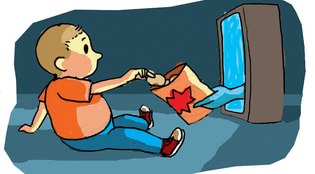 loading
loading
FindingsSnack attack Gregory NemecView full imageWhenever Jennifer Harris's young son sat down in front of the television, he wanted a snack. It didn't matter whether he was full, whether he'd just eaten a huge dinner. “There was something very powerful about television causing him to want a snack,” Harris says. “It occurred to me that priming from the food ads might be causing him to consume.” Harris, an associate research scientist at the Rudd Center for Food Policy and Obesity, just published a study showing that her hunch was right. The research, published in Health Psychology, showed that 7- to 11-year-old children who watched cartoons interspersed with snack food commercials ate 45 percent more than did those who saw non-food commercials. A subsequent trial of adults revealed that these effects lingered even after the television was off. None of the commercials the subjects saw actually featured the snack crackers they were eating, suggesting that snack food commercials can increase viewers' consumption of whatever the viewers have on hand. “It seemed to us that the message in the ad -- the immediate gratification angle -- was more important than the actual foods that were being shown,” Harris says. If snack food advertising can have such a powerful effect, Harris wonders what all the other food triggers in our environment are doing to us. “It's possible that just exposure to brand logos or driving by the McDonald's arches could have similar effects,” she says. And documenting these effects is the first step, both in creating policies that regulate such advertising and in raising consumer awareness. “The adults did not suspect at all that the marketing influenced how much they ate,” Harris says. “Raising people's awareness that the food marketing does affect them in that way can help them find ways to counteract the effects.”
The comment period has expired.
|
|